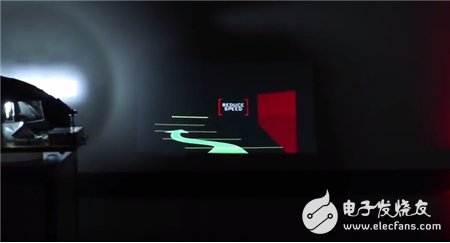The topic "The Future of Vehicle Head-Up Display (HUD)" seems to involve many technical vocabulary at first glance, but this display technology will have enormous application potential in the next few years. According to HIS AutomoTIve, global sales of pre-installed HUDs will increase from 1.2 million in 2012 to 9.1 million in 2020 – this does not include consumers using HUD solutions for their existing vehicles. Quantity. If you're a developer or an automotive original equipment manufacturer (OEM), you might be bothered by the introduction of HUD to the next vehicle, whether it's an integrated or a post-install solution. . Developers need to consider many factors when constructing different products, including the field of view (FOV) and image quality. A key area driving the future development of automotive HUDs is Augmented Reality (AR). First of all, we want to define the AR referred to here - although there are many different opinions on AR in the market, the views on how AR will affect the future of car display are relatively consistent. If you put the real world at one end and put virtual reality (VR) on the other end, the AR is right in the middle of these two extremes. In vehicles, AR covers digital images in the real world we see, enhancing computational intelligence for the driver's line of sight. In other words, the AR HUD makes the windshield the focus of all relevant data such as speed and road hazard, while ensuring that the driver always pays attention to the road ahead. While there is still controversy about what relevant data to display and when to display the data, there are already some technical points in the industry that are recognized for their attention when designing AR HUD. The field of view may be the most important aspect for any HUD, especially for AR HUD, because it directly affects the size of the image seen by the driver. Currently, the widest FOV achieved with DLP® technology allows OEMs to project up to 12 degrees – twice the value previously achieved in the industry. The virtual image distance controls the throw distance of an image and how far this image appears from the driver. This is especially important when the speed is high, because it is necessary to better indicate the danger of the road surface. Current HUD designs using DLP chips can project images in any range from 2 meters to 20 meters in front of the driver. One thing to note is that in this case, the image quality is not necessarily equivalent to a higher resolution. Image quality involves multiple variables such as image refresh rate, color depth, and brightness. Unlike indoor cinema, controlling image quality itself is challenging in such a chaotic and unpredictable outdoor car environment. The ever-changing light intensity during the day and night means that any automotive AR HUD solution must be able to maintain color depth and color accuracy, as well as consistent high contrast for proper operation in a wide range of driving conditions. For example, our DLP3000-Q1 is a car-compliant chipset that includes the DLP 0.3-inch WVGA digital micromirror (DMD) and DLPC120 digital controller, and features 400,000 fast-switching programmable micromirrors for milliseconds. High refresh rate and enhanced image quality. DLP technology can be used with any light source, giving developers the flexibility to use traditional incandescent lamps, or halogen sources, LEDs, and even lasers. Most automotive AR HUD solutions require developers to collaborate when designing a solution to meet the needs of their products and customers. As we mentioned earlier, HUD solutions are often part of an integrated solution featuring Advanced Driver Assistance Systems (ADAS) and other centrally-focused components to provide a better driving experience. . At TI, we have a long history of working with developers and partners who make up the TI Design Network to help them create products and services that leverage and develop our extensive library of semiconductor device solutions. · Visit the DLP product overview page · Learn more about DLP technology HUD solutions in this blog post
Flat Control Cable Also known as festoon cable, this flat cable fits in confined spaces such as overhead cranes and hoists. It sends signal and data to operate, measure, or regulate automated equipment.
Raw cable can be UL2651, UL20251 ,etc
Flat cable, IDC cable, flat cable wiring, ribbon cable harness, flexible flat cable ETOP WIREHARNESS LIMITED , https://www.wireharnessetop.com